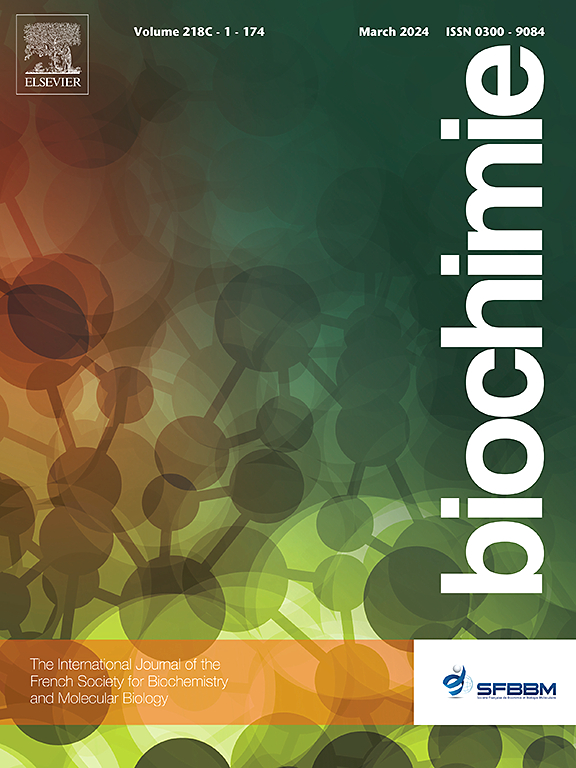In silico activity and effect of synthetic chalcones on Candida albicans and Candida tropicalis biofilms
IF 3
3区 生物学
Q2 BIOCHEMISTRY & MOLECULAR BIOLOGY
引用次数: 0
Abstract
Biofilm formation is considered one of the most important virulence factors for Candida species, which presents an extracellular matrix of polymeric substances that limits the passage of antifungals, leading to fungal resistance. Therefore, the present study investigated the biofilm eradication effect of synthetic chalcones against Candida albicans and Candida tropicalis. Molecular docking studies were conducted to verify the mechanism of action of chalcones on Candida species proteins. The biofilm eradication effect was determined using crystal violet methodology to quantify biomass and Thiazolyl blue tetrazolium bromide (MTT) to verify the influence on metabolic activity. A molecular docking study was also carried out with Candida proteins using the Protein Data Bank repository (https://www.rcsb.org/) and Autodocktools™ software. The results showed that (1E,4E)-1,5-diphenylpenta-1,4-dien-3-one (DB-Acetone), (1E,3E,6E,8E)-1,9-diphenylnona-1,3,6,8-tetraen-5-one (DB-CNM), and (1E,4E)-1,5-bis(4-methoxyphenyl)penta-1,4-dien-3-one (DB-Anisal) were able to eradicate the biomass of C. albicans CA INCQS 40006 (ATCC 10231), while fluconazole only reduced the biomass at the three tested concentrations (IC50, IC50 × 10, and IC50 × 20) against C. tropicalis CT INCQS 40042 (ATCC 13803). Both chalcones and fluconazole successfully reduced metabolic activity across all tested strains. The molecular docking study concluded that DB-Acetone, DB-Anisal, and DB-CNM exhibited significant affinity energy values toward the binding sites of C. albicans and C. tropicalis. It is concluded that the synthetic chalcones showed promising results in inhibiting Candida spp. biofilm, demonstrating efficacy in reducing biomass as well as metabolic activity.
合成查尔酮对白色念珠菌和热带念珠菌生物膜的活性及影响。
生物膜的形成被认为是念珠菌最重要的毒力因素之一,它呈现出一种聚合物物质的细胞外基质,限制了抗真菌药物的通过,导致真菌耐药性。因此,本研究考察了合成查尔酮对白色念珠菌和热带念珠菌的生物膜根除作用。通过分子对接研究验证查尔酮对念珠菌蛋白的作用机制。用结晶紫法测定生物量,用噻唑蓝溴化四唑铵(MTT)测定对生物膜根除效果的影响。利用蛋白质数据库(https://www.rcsb.org/)和Autodocktools™软件,还对念珠菌蛋白进行了分子对接研究。结果表明,(1 e, 4 e) 1, 5-diphenylpenta-1, 4-dien-3-one (DB-Acetone), (1 e, 3 e 6 e 8 e) 1, 9-diphenylnona-1, 3、6 8-tetraen-5-one (DB-CNM)和(1 e, 4 e) 1, 5-bis (4-methoxyphenyl) penta-1 4-dien-3-one (DB-Anisal)能够消除白念珠菌的生物量CA INCQS 40006(写明ATCC 10231),而氟康唑仅降低了生物质在三个测试浓度(IC50, IC50 x 10, IC50 x 20)与c tropicalis CT INCQS 40042(写明ATCC 13803)。查尔酮和氟康唑都成功地降低了所有测试菌株的代谢活性。分子对接研究表明,DB-Acetone、DB-Anisal和DB-CNM对白色念珠菌和热带念珠菌的结合位点具有显著的亲和能值。综上所述,合成的查尔酮具有抑制念珠菌生物膜的作用,具有降低菌体生物量和代谢活性的作用。
本文章由计算机程序翻译,如有差异,请以英文原文为准。
求助全文
约1分钟内获得全文
求助全文
来源期刊

Biochimie
生物-生化与分子生物学
CiteScore
7.20
自引率
2.60%
发文量
219
审稿时长
40 days
期刊介绍:
Biochimie publishes original research articles, short communications, review articles, graphical reviews, mini-reviews, and hypotheses in the broad areas of biology, including biochemistry, enzymology, molecular and cell biology, metabolic regulation, genetics, immunology, microbiology, structural biology, genomics, proteomics, and molecular mechanisms of disease. Biochimie publishes exclusively in English.
Articles are subject to peer review, and must satisfy the requirements of originality, high scientific integrity and general interest to a broad range of readers. Submissions that are judged to be of sound scientific and technical quality but do not fully satisfy the requirements for publication in Biochimie may benefit from a transfer service to a more suitable journal within the same subject area.
 求助内容:
求助内容: 应助结果提醒方式:
应助结果提醒方式:


